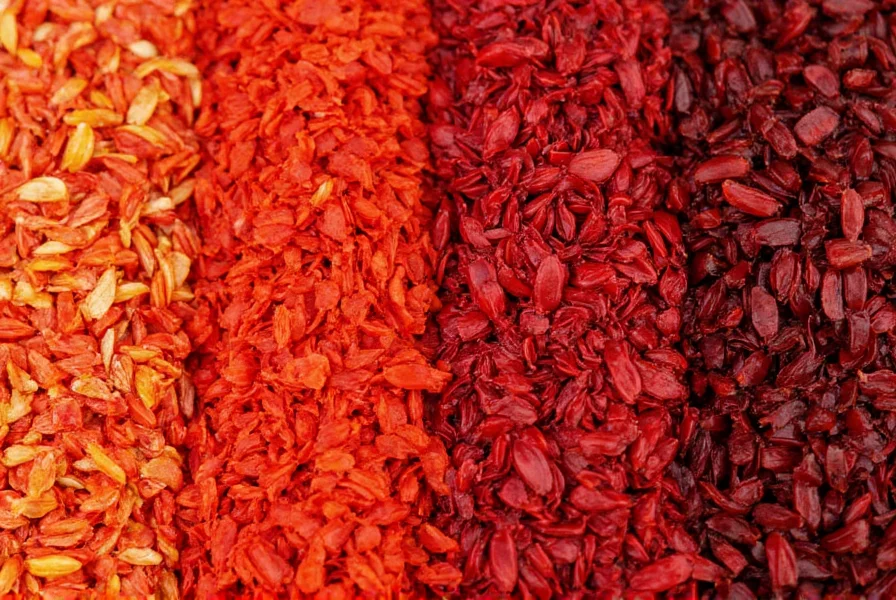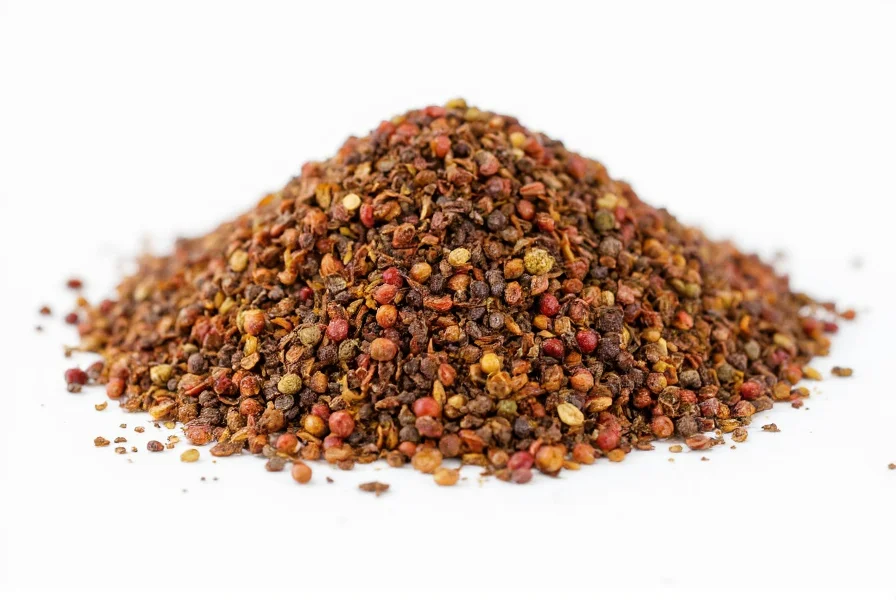Understanding pepper flakes begins with recognizing their role in global cuisines. These versatile spice components have been used for centuries across Mediterranean, Italian, and Asian cooking traditions. Unlike pre-ground pepper, quality pepper flakes retain essential oils and volatile compounds that deliver complex flavor profiles beyond mere heat.
Pepper Flakes vs. Similar Products
Many consumers confuse pepper flakes with other spicy ingredients. The key distinction lies in composition and heat level. True pepper flakes come specifically from dried cayenne peppers, while "crushed red pepper" often contains a blend of辣椒 varieties including bell peppers with minimal heat.
| Product | Primary Ingredients | Heat Level (SHU) | Flavor Profile |
|---|---|---|---|
| Pepper Flakes | Dried cayenne peppers | 30,000-50,000 | Sharp, fruity, immediate heat |
| Crushed Red Pepper | Mixed chili varieties | 500-15,000 | Milder, more variable heat |
| Chili Powder | Ground chilies + spices | Varies widely | Complex, often includes cumin/garlic |
Varieties and Heat Levels
Pepper flakes aren't monolithic—their heat and flavor vary significantly based on pepper variety and growing conditions. Commercial products typically use cayenne, but artisanal versions might incorporate:
- Arbol peppers (60,000-75,000 SHU) - sharper, cleaner heat
- Guajillo peppers (2,500-5,000 SHU) - smoky, tangy notes
- Thai bird chilies (50,000-100,000 SHU) - intense, floral heat

Culinary Applications and Technique
Professional chefs leverage pepper flakes differently than home cooks. The timing of addition dramatically affects flavor impact:
- Early addition (during oil heating): Releases capsaicin into cooking medium for even heat distribution
- Middle cooking: Balances integration with preserved texture
- Finishing: Provides textural contrast and immediate heat sensation
For optimal flavor extraction, briefly toast flakes in 1-2 tablespoons of oil before adding other ingredients. This technique, used in Italian aglio e olio, releases essential oils while mellowing harsh bitterness.
Storage and Shelf Life
Pepper flakes maintain quality significantly longer than many realize when stored properly. Light and moisture are primary degradation factors:

- Room temperature: 1-2 years in airtight container away from light
- Refrigerated: 2-3 years with minimal quality loss
- Freezer: Up to 4 years (prevents oil separation)
Signs of degradation include faded color, musty odor, or clumping. Properly stored flakes should retain vibrant red color and release aromatic compounds when crushed between fingers.
Nutritional Profile and Health Considerations
Beyond flavor, pepper flakes offer notable nutritional benefits per tablespoon (6g):
- 15 calories
- 0.9g dietary fiber (3% daily value)
- 44% of daily vitamin A needs
- Significant capsaicin content with studied metabolic benefits
Research published in the Journal of Nutritional Science indicates regular capsaicin consumption may support metabolic health, though individuals with gastrointestinal sensitivities should moderate intake.
Common Misconceptions
Several myths persist about pepper flakes:
- Myth: All red pepper flakes are identical
- Fact: Heat levels vary up to 5x between brands based on pepper blend
- Myth: The seeds provide most heat
- Fact: Placenta tissue (white ribs) contains highest capsaicin concentration
- Myth: Darker flakes indicate older product
- Fact: Color depends on pepper variety and drying method, not age
Practical Usage Tips
Maximize pepper flake effectiveness with these professional techniques:
- Create infused oils by steeping 2 tbsp flakes in 1 cup olive oil over low heat for 20 minutes
- Balance excessive heat with acid (lemon juice or vinegar) rather than dairy
- For even distribution in dry rubs, mix with brown sugar or salt first
- When substituting for fresh chilies, use 1/2 tsp flakes per medium fresh chili
Frequently Asked Questions
What's the difference between pepper flakes and crushed red pepper?
True pepper flakes come specifically from dried cayenne peppers, while crushed red pepper typically contains a blend of various chili varieties including milder peppers. Pepper flakes generally deliver more consistent heat (30,000-50,000 SHU) compared to the variable heat of crushed red pepper (500-15,000 SHU).
Can I substitute paprika for pepper flakes?
Smoked paprika makes an excellent substitute for pepper flakes when you want flavor without intense heat, but regular paprika lacks sufficient spiciness. For heat equivalence, use 1/2 teaspoon cayenne pepper plus 1/2 teaspoon paprika to replace 1 teaspoon pepper flakes.
Why do some pepper flakes contain seeds while others don't?
Seed content depends on processing methods. Higher quality pepper flakes often retain some seeds and white ribs (placenta) which contain capsaicin, while commercial blends may remove seeds for consistent texture. The seeds themselves contribute minimal heat compared to the white ribs attached to them.
How can I reduce the heat of a dish that's too spicy from pepper flakes?
Acid neutralizes capsaicin more effectively than dairy. Add lemon juice, vinegar, or tomato product rather than yogurt or milk. For immediate relief, incorporate starches like rice or potatoes which absorb capsaicin. Never add more pepper flakes to 'balance' heat - this compounds the problem.
Are pepper flakes gluten-free and suitable for special diets?
Pure pepper flakes are naturally gluten-free, vegan, and paleo-friendly. However, check labels for anti-caking agents or processing on shared equipment if you have severe sensitivities. Some commercial blends contain flour or other additives to prevent clumping.











 浙公网安备
33010002000092号
浙公网安备
33010002000092号 浙B2-20120091-4
浙B2-20120091-4